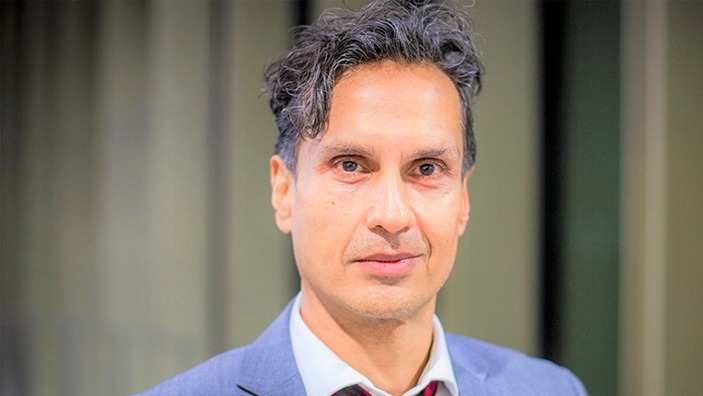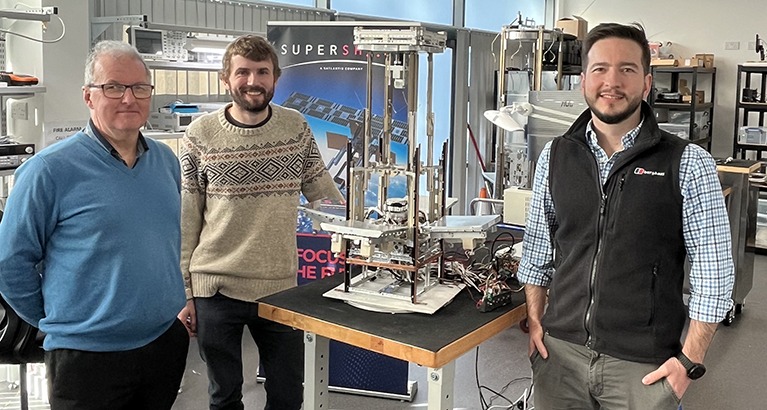
Disruptive innovation theory (DIT) has been central to the thinking about how organisations operate in a competitive economy for nearly 30 years.
Yet despite many academic papers on DIT and its considerable effect on business thinking – including how newcomers challenge established markets and how incumbents react – there has also been a lot of controversy over DIT’s applicability and how it has evolved since the watershed 1995 book “Disruptive Technologies: Catching the Wave”, by prominent academics Clayton Christensen and Joseph Bower.
The debates and controversies surrounding DIT is the topic of extensive research by Shaz Ansari, Professor of Strategy & Innovation at Cambridge Judge Business School, along with colleagues at the Institute for Manufacturing (IfM) at the University of Cambridge: IfM Doctoral Student Stephen Lile, who is an Executive MBA graduate of Cambridge Judge (EMBA 2016) and current Fellow at the School’s Strategy and International Business subject group, and Dr Florian Urmetzer, Associate Teaching Professor at the IfM.
How the research aims to help firms respond to market disturbances
Their research (“Rethinking disruptive innovation: unravelling theoretical controversies and charting new research frontiers”) has dissected the application of DIT and academic papers on the topic, including some co-authored by Shaz over the past 15 years, to develop a new approach to looking at DIT.
Our research will help […] provide businesses with a more flexible guide to market disruptions and a better understanding of the factors at play.
“It became clear that the discussion around DIT was focused too narrowly and that a broader and more nuanced approach was needed,” says Shaz. “We think our research will help to focus thinking on DIT in a way that will help provide businesses with a more flexible guide to market disruptions and a better understanding of the factors at play.
“Our research on DIT is also a terrific example of cross-departmental collaboration at the University of Cambridge, in this case between Cambridge Judge Business School and the Institute of Manufacturing, and the topic of disruptive innovation is one that I frequently teach in EMBA and Executive Education programmes at Cambridge Judge.
Why it’s important to challenge assumptions about disruptive innovation theory
The research by Shaz and his IfM colleagues has developed a novel ‘challenger-incumbent’ perspective that shifts the focus beyond the traditional battle between dominant players and disruptors to instead consider a broader DIT ecosystem that also encompasses many other stakeholders and subtler ways in which innovation causes disruption.
In so doing, the research sheds new light on issues such as outcome bias in DIT, which tends to emphasise the benefits of disruption while glorifying challengers, arguing that such preconceptions can distort broader issues surrounding innovation and disruption.
“Our work in this area was designed not only to synthesise other research on the topic, as valuable as such synthesis can be, but also to revise some of the thinking around DIT to the point of challenging some well-established assumptions about one of the most pivotal business theories in the past quarter-century,” says Shaz.
“We don’t pretend to be the last word on this topic, and we strongly invite further research to better understand the use, limitations and subtle nature of disruptive innovation theory.”
Successful business strategies for dealing with disruption
Previous research by Shaz had found that incumbents can survive and even prosper when faced by disruptive innovation by forging effective partnerships with challenger firms, adapting their structure, acquiring promising challengers, or having complementary assets important for the new technology’s effective deployment and commercialisation.
In a study about the auto industry, done with co-authors Eden Yin, Associate Professor in Marketing at Cambridge Judge, and a senior executive of Jaguar Land Rover (JLR), Shaz identified 8 key issues facing incumbents in such a sector faced with multiple disruptive changes:
- how to disrupt themselves when faced with challenges
- coping with multiple radical innovations and challengers
- cooperating with competitors new and old
- identifying key factors to navigate change; better predicting and preparing for the most likely future scenario
- organisational capability
- developing a platform strategy (car as a platform)
- obtaining a different set of organisational competences or radically transforming existing ones
A study Shaz co-authored on digital video recorder (DVR) company TiVo demonstrated how TiVo was initially seen as a disruptive threat to the incumbent television industry, but the firm then effectively navigated and reframed itself as a ‘connector’ instead of a ‘disruptor’ to win the support over time of the TV ecosystem – to TiVo’s advantage.
This study looked at the ‘disruptor’s dilemma’ in which the challenger needs to consider how it can pitch its innovation to attract new customers while reducing the threat felt by the broader ecosystem that it might ultimately benefit from, and also how the innovation might be modified to fit into the existing ecosystem.
Six controversies about disruptive innovation theory
Regarding disruptive innovation theory, Shaz’s research identifies 6 key controversies surrounding DIT that deserve further academic research in order to address some of the challenges surrounding the theory to build a better understand DIT:
1
Definitions
Scholars have differed on precisely what disruptive innovation means (and in fact Clayton Christensen later questioned his decision to prefix ‘innovation’ with ‘disruptive’). Is DIT an innovation or a way to measure success in meeting organisational goals? And is DIT only ‘disruptive’ in the sense of a short and sharp shock that upends existing arrangements, or does it also need to be sustaining and transformational?
“A similar lack of clear definition has affected scientific scholarship regarding the term ‘sustainability’”, says Shaz, “and this has carried over into how governments and companies implement such initiatives given that there is no single accepted definition of the word.”
2
Case studies
Critics of DIT believe that the initial work on the theory was too reliant on historical case studies, which can pose a challenge for developing theories that are generalisable. While initial DIT theory suggested that new challengers usually topple incumbents, more recent research contests such an assertion – finding that many market leaders may wobble but don’t fall in the face of disruptive competition, and then recover to a prominent position. For example, generative AI may even favour incumbents as they can bundle AI into their large installed customer bases. Thus, rather than being toppled by challengers, incumbents may even be able to even extend their dominance.
“This is an area full of ambiguities,” says Shaz. “Newcomers can gain a foothold in a market that weakens an incumbent’s market dominance, but that doesn’t mean that the incumbent disappears or fails to remain a potent force in that market.”
3
Generalisability
If the case studies anchoring a theory are too narrow, that theory may not apply properly to other types of cases, so this has prompted critiques of DIT.
For example, how does Apple’s hugely successful introduction of the iPhone fit the theory of DIT? Disruptive innovation usually is seen as involving a cheaper and initially inferior technology finding a foothold in an under-served market, but the iPhone was more expensive and superior to existing products. In this case, a premium product made people’s lives easier and proved to be a big hit, disrupting dominant incumbents like Nokia and Blackberry, and prompting rivals to develop similar smartphones.
“DIT is not alone in attracting challenges regarding generalisability, as well-established research in behavioural economics and other fields have also been questioned in the same way,” says Shaz.
4
Unit of measure
Establishing what should be the unit of measure regarding DIT is another area that has divided opinion – as even Clayton Christensen’s work has appeared to shift between different units of measure including the market, the company, and the business model.
The research by Shaz suggests that the difficulty in establishing a clear unit of measurement reflects the evolutionary nature of DIT and how it intersects with other debates among scholars in this area – which is why it’s important to have an integrated approach in analysing this area.
5
Outcome bias
Theories can be skewed if scholars evaluate them based on outcomes rather than core rationale – and in the case of DIT this can take the form of ‘incumbent survivor bias’ (which over-emphasises cases where incumbents fall to disruptors) and ‘pro-innovation bias’ (which assumes that new and more innovative is better).
DIT research has often focused on how incumbents can dodge or parry innovative challengers, usually through only 2 prisms: does the disruption represent an existential threat or something the incumbent can use itself to further its dominance? Previous research by Shaz urged a more multiplexed framework in looking at disruptive innovation more broadly and less dichotomously as existential threats or opportunities.
The disruption-is-always-good bias assumes that innovation creates positive changes in society, which not everyone agrees with – for example, technological advancement has made ‘fake news’ widespread. Other scholars have argued that the key issue is not whether innovation is good or bad, but whether it stimulates useful shifts in thinking or modelling.
“We’re seeing this debate play out in real time over ChatGPT and other generative artificial intelligence,” says Shaz. “Generative AI is surely innovative and disruptive, and there is plenty of debate over whether risks outweigh opportunities – but the technology has certainly prompted lots of serious thought which can only be beneficial.”
6
The nature of DIT theory
Critics of DIT believe that it focuses too much on why businesses fail rather than seeking to explain more nuanced change in markets and the firms that comprise them. Some scholars have argued that DIT only really works in hindsight, while others seek to maximise its predictive potential, so this has been a controversial area. In an earlier work on “perspectives on disruptive innovation”, Shaz conceptualises the prescriptive application of DIT as ‘performativity’, where managerial actions and decisions are not strictly about making accurate predictions but rather serve as actionable blueprints to jumpstart the innovation journey. Shaz describes performativity as a prescription converted into managerial discourse and action with anticipated outcomes. ‘Language and framing’ such as a business-model pitch doesn’t just describe but also constitutes and actualises the realities that they envision through the actions they entail.
There has been discussion about the role of consumers in helping to identify opportunities for disruptive innovation. Shaz and his colleagues argue in their research that it’s important to identify “negative sentiments as adverse antecedents to disruption, characterised as disillusionment, distrust, or dissatisfaction with conventional offerings from incumbents or the overall marketplace in a given sector”.
Why findings can help strategic decision-making in organisations
The introduction of a new challenger-incumbent template for understanding disruption is designed to expand the focus of DIT by advocating a subtler approach that also highlights “the dynamic interplay between disruptors and incumbents,” says the research by Shaz.
“Our approach responds to the call for a broader, more inclusive, understanding of disruptive processes. By identifying and recalibrating key controversies within DIT, we aim to refine management theories where there is a lack of consensus, as exemplified in the case of DIT.
“In strategic decision-making, organisations across sectors can harness the power of the challenger-incumbent template to inform their approaches,” the research says. “With this new understanding, incumbent companies are better positioned to recognise potential disruptors early on. This awareness can cultivate agility in their response to emerging innovations. In contrast, challengers can strategically identify and exploit vulnerabilities within established markets.
“Acknowledging the dual nature of disruptive innovations – their capacity to drive progress alongside potential societal and economic consequences – also broadens the application of DIT. We call upon businesses and policymakers to consider these 2 facets of innovation in tandem. A more balanced approach will help to foster sustainable and ethical innovation practices, ensuring that advancements in one area do not have unintended negative impacts on others.”
Going forward, Shaz recommends that scholars approach DIT “with an appreciation of its dynamic nature, recognising that its development reflects an ongoing process rather than a fixed set of principles”.
Featured research
Lile, S., Ansari, S. and Urmetzer, F. (2024) “Rethinking disruptive innovation: unravelling theoretical controversies and charting new research frontiers.” Innovation
Fraser, J. and Ansari, S. (2021) “Pluralist perspectives and diverse responses: exploring multiplexed framing in incumbent responses to digital disruption.” Long Range Planning
Kumaraswamy, A., Garud, R. and Ansari, S. (2018) “Perspectives on disruptive innovations.” Journal of Management Studies
Yin, E., Ansari, S. and Akhtar, N. (2017) “Radical innovation, paradigm shift and incumbent’s dilemma: the case of the auto industry.” Future Studies Research Journal
Ansari, S., Garud, R. and Kumaraswamy, A. (2016) “The disruptor’s dilemma: TiVo and the U.S. television ecosystem.” Strategic Management Journal





